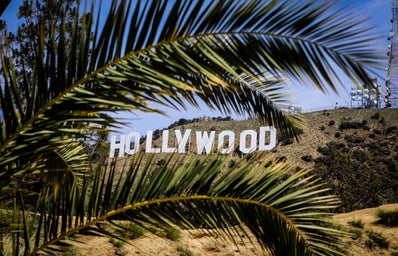When one thinks of Hollywood, images of big budget movies and glamourous stars strutting the red carpet can’t help but spring to mind. These associations originated sometime between the 1920s and 1960s, during one of the most influential eras, the Golden Age. This period of time saw technological developments, star power, and sexism reach new heights. The effects of this prominent era are echoed throughout the modern industry.
The 1929 Wall Street Crash saw most sectors of the US economy collapse. The Great Depression led to many Americans struggling financially. However Hollywood would not suffer the same fate. During the 1920s and 1930s more films were released by the major studios than in any other decade. More affordable than attending a concert or play, cinema became a popular form of escapism. Genres such as westerns and gangster films became popular as they celebrated optimism, resilience, ambition, and courage in a time of despondency and desperation.
Filmmakers took advantage of the popularity surge and began experimenting with technology in an attempt to improve the cinematic experience. The first major development was the introduction of colour to film. Early attempts included hand tinting individual frames, an extremely laborious process. The following years saw the use of stencils to tint rolls of film, a much faster and easier approach, while some engaged with toning, bathing the film in coloured dye to fit the ambience of a scene. An issue would arise when the industry progressed to sound on film technology as the tinting interfered with the audio. In 1922, the Technicolour Corporation offered a solution with the beam splitting camera, producing more realistic and accurate colour that worked with audio. In the mid 1930s producer David O’Selznick casted big stars in coloured film for the first time, validating the method and proving the power of celebrity.
By this time, studios including Warner Brothers and Twentieth Century Fox, knew exactly how to produce a successful film. Jeanine Basinger, author of The Star Machine describes the studio system of the Golden Age as “a well-oiled machine with everything needed to make movies right on the lot.” The movie star was a preponderant element to their success. The formula of celebrity was strictly adhered to with stars expected to possess impossible looks, incredible talent, a perfect voice, distinctive mannerisms, glamour, androgyny, and of course sex appeal. Actresses such as Marilyn Monroe were portrayed as sex symbols in a successful attempt to appeal to the male gaze. It was easy for studios to control much of the popular media, carefully curating and oftentimes sexualising actresses’ reputations.
As the studio system fell under the control of a small group of men, female representation was severely lacking during the Golden Age. A study from Northwestern University suspects “male producers hire male directors and male writers.” This provided ideal conditions for sexism and misogyny to thrive. Two groundbreaking lawsuits caused the breakaway of the studio system when Oscar-nominated actress Olivia de Havilland sued Warner Brothers and won in 1943. The second lawsuit came in 1948 when the US government sued Paramount Pictures, resulting in the studios no longer exclusively producing, distributing and exhibiting their films. Despite these changes sexism has remained prevalent in Hollywood. Movements such as #MeToo has strived to challenge these values but gender inequality of the Golden Age still resonates in the modern day.
The Golden Age was a pivotal moment in history, establishing much of the technology used in modern cinema. While it only spanned a few decades, its societal impact is undeniable, creating the celebrity persona that we know today and gifting the world with icons such as Audrey Hepburn and James Dean. As we appreciate the beauty of old Hollywood one cannot deny the rife misogyny designed to control and silence women, a not so welcome legacy of the era.


